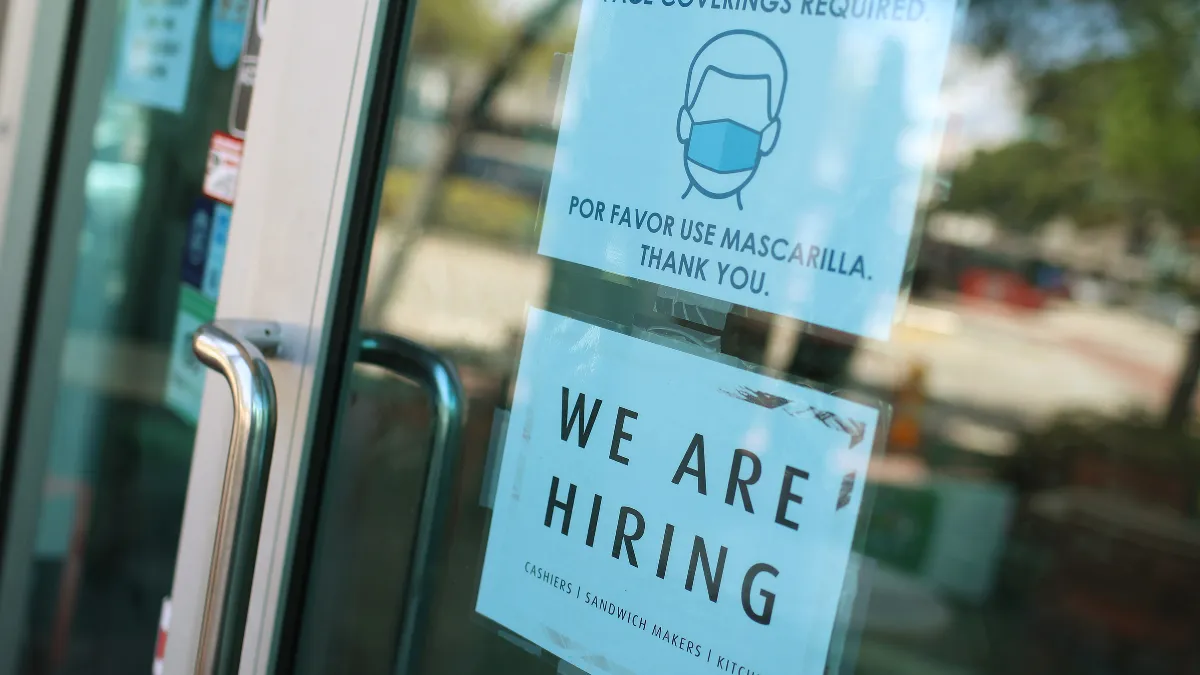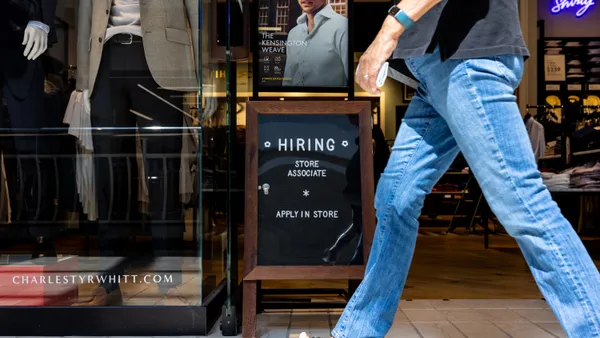Dive Brief:
- Employers should expect 2021's labor market issues to continue into the new year, according to a report this month from Glassdoor. The career site's analysis of federal job openings data showed that the current state of recovery differs from previous economic recessions, with a much lower ratio of unemployed workers per job opening.
- Glassdoor said it was "unlikely that we will return anytime soon to an earlier point in the recovery where it's easy to hire." That is in part due to the lingering effects of the pandemic, the reduced availability of retirees and parents and the fast recovery of consumer demand, which contributed to an imbalance between labor supply and demand, the company added.
- Internal Glassdoor survey data of employers, meanwhile, showed employers face increased competition in seeking to hire for remote positions. About 20% of employers hiring locally in October 2021 said they were competing against remote jobs, compared to some 10% of such employers who said the same in 2019. This trend also could drive increased salary offers due to competition with larger firms that already have a strong remote-work presence, Glassdoor said.
Dive Insight:
Everywhere employers look, signs seem to point to a lull in the labor market that will not let up anytime soon.
Past research may bolster some of Glassdoor's observations. For example, economist Miguel Faria e Castro of the Federal Reserve Bank of St. Louis detailed in an October report the impact of the pandemic on encouraging baby boomers to retire. Faria e Castro found that, as of August 2021, the U.S. recorded slightly more than 2.4 million excess retirements due to COVID-19, a figure that represented more than half of the total number of workers who left the labor force from the beginning of the pandemic to the second quarter of 2021 — 4.2 million.
Generally, the nation has had a gradual, if slow, labor market recovery over the past year. According to the U.S. Bureau of Labor Statistics, the unemployment rate for November was 4.2%, down from 6.7% in December 2020, while the number of jobs added in November declined to 210,000 from the mark of 530,000 in October. Analysts previously told HR Dive that the numbers showed that despite the continued impact of the pandemic and supply chain issues, employers continued to compete heavily for talent.
Pay increases and bonuses have been widely used as an incentive tool. WorldatWork survey results published in November showed that more than half of organization respondents offered sign-on bonuses to candidates within the past 12 months, while others used referral, spot and retention bonuses. In struggling industries like retail, hourly wages in excess of $15 became widespread during the pandemic, while competitors attempted to one-up each other with benefits covering child care assistance, college tuition payments and other areas, Retail Dive reported.
But safety also remains a sticking point for those hesitant to return to on-site work. A Randstad survey published last month found that, among respondents who were not able to work remotely, 88% said mask mandates were the most important pandemic-response measure their employers took, while 63% cited social distancing and 44% cited temperature checks. More than one quarter of such respondents said their employers had not changed anything with respect to safety standards during the pandemic.
Establishing trust with workers may be a sticking point moving forward, and that may not be limited to pay transparency and safety alone. Other research has found workers are not on the same page as employers when it comes to the effectiveness and availability of career development opportunities, for example.













